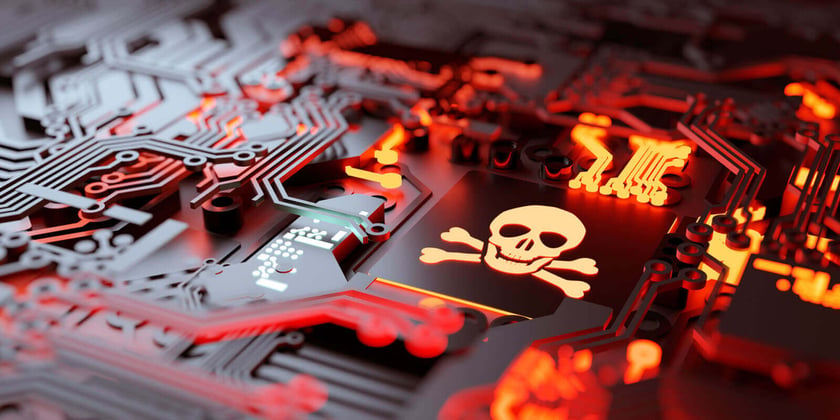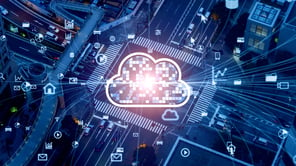Originally Published February 2017
Updated July 2023
Cyberthreats remain a persistent challenge for individuals and organizations alike. Among these threats, ransomware stands out as one of the most pervasive and damaging cyberattacks.
According to a recent investigation by Microsoft Incident Response of a BlackByte 2.0 ransomware attack, they found that the threat actor progressed through the full attack chain, from initial access to impact, in less than five days.
With ransomware attacks becoming more frequent and sophisticated, it’s crucial for organizations to arm themselves with knowledge and preparedness.
In this blog, we’ll delve deep into the world of ransomware, exploring what it is, the devastating consequences it can bring and most importantly, productive strategies to protect your organization from falling victim to this cyber menace.
What is Ransomware?
Ransomware is a malicious form of software that has emerged as a major cybersecurity threat, wreaking havoc on individuals and organizations worldwide.
Operating on a simple yet devastating principle, ransomware infiltrates a victim’s computer or network, encrypting sensitive files and data, making them inaccessible to the owner.
Cybercriminals then demand a ransom in exchange for providing the decryption key necessary to unlock the files. This nefarious practice holds victims’ data hostage, forcing them to choose between paying the ransom or facing irreparable data loss and operational disruptions.
Ransomware attacks have become increasingly sophisticated, with cybercriminals employing advanced techniques, social engineering and targeted campaigns to maximize their impact and financial gains.
As organizations continue to digitize their lives and operations, understanding and defending against ransomware have become critical components of modern cybersecurity strategies.
Understanding the Risks of Ransomware
The 2022 Microsoft Digital Defense Report stated that 50% of Microsoft cybersecurity recovery engagements were related to ransomware incidents.
Businesses of all sizes are targeted by criminals in the growing cybercriminal ecosystem, and the risks can be substantial:
Financial and Reputational Losses
One of the most prominent dangers is the potential for severe financial losses, as ransom demands can reach exorbitant amounts. This leaves organizations grappling with the decision of whether to pay or endure data loss and operational disruptions.
Moreover, paying the ransom might not guarantee data recovery, and the resulting data breaches can tarnish a company’s reputation, eroding trust among customers, partners and stakeholders.
Data Loss and Disruption
Ransomware attacks can result in the loss of critical data and operational disruptions, paralyzing an organization’s ability to function. Vital files, financial records, customer data and proprietary information become inaccessible, hindering day-to-day operations and causing significant downtime.
Legal and Regulatory Compliance
Ransomware attacks that compromise sensitive customer data can have severe legal and regulatory implications. Organizations may face lawsuits, fines and damage to their brand image for failing to safeguard customer information adequately.
Steps for Responding to an Attack
Responding to a ransomware attack requires swift and immediate attention, otherwise ransomware may spread to scan other network locations for critical files.
Although you may follow a few simple guidelines to respond to ransomware effectively, root-cause analysis, cleanup and investigations typically require professional assistance.
Assess Which Systems Are Impacted
In order to minimize damage to the environment, you must isolate systems. You’ll want to determine which user accounts might be compromised, which accounts were used to deliver the payload, which applications were affected, etc.
Preserve Existing Systems
After assessing the scope of the incident, you’ll want to disconnect any affected systems. If you have online backups, consider disconnecting the backup system from the network until you’re confident the attack is contained.
Eradicate the Threat from the Network
Backdoors may be used by attackers, so eradication must be carried out by a reputable professional. For the expert to do a root-cause investigation that identifies the vulnerability and all impacted systems, access to logs is necessary.
Contact Professional Support
Have an expert assess the environment for potential security upgrades. Oftentimes, ransomware victims are targeted for second attacks and undetected vulnerabilities can be exploited again.
Ransomware Solutions: How to Keep Your Organization Protected
Criminals are getting more and more advanced and ransomware attacks will, without a doubt, continue. However, disrupting common attack patterns could stop many of the attacker activities that precede ransomware deployment.
By implementing common security hygiene practices, you’ll be able to prevent, identify and respond to malicious activity as early as possible to mitigate the impact of ransomware attacks.
A Managed IT Services program provides reactive and proactive services, as well as strategic planning:
- Reactive services assist when a user is most in need
- Proactive tools implement best practices to improve security
- Strategic planning propels your business forward
Security measures that can be put in place for an in-depth defense strategy to reduce the chance of ransomware include:
- Limiting user access to required network areas
- Configured systems specific to user requirements. If users don’t need to change applications, the system can be locked down to avoid unintended programs from running
- DNS filtering to block certain websites by category: block malware and protect from botnet
- Anti-virus and malware filtering of email and data
- Email filtering to block unknown or suspicious emails before they’re received
- Managed backup and business continuity configured to your organization’s needs. A business continuity platform can serve as a temporary host for servers either in the cloud or on-site, if needed

Loffler Companies is the largest privately owned business technology and services organization in the Upper Midwest. We are dedicated to providing innovative solutions and managed services to drive business for organizations of all sizes. Our offerings include IT Professional and Managed Services, Multi-Functional Copiers and Printers, Managed Print Services, Unified Communications, Software and Workflow Technologies, and Onsite People-Based Services.




